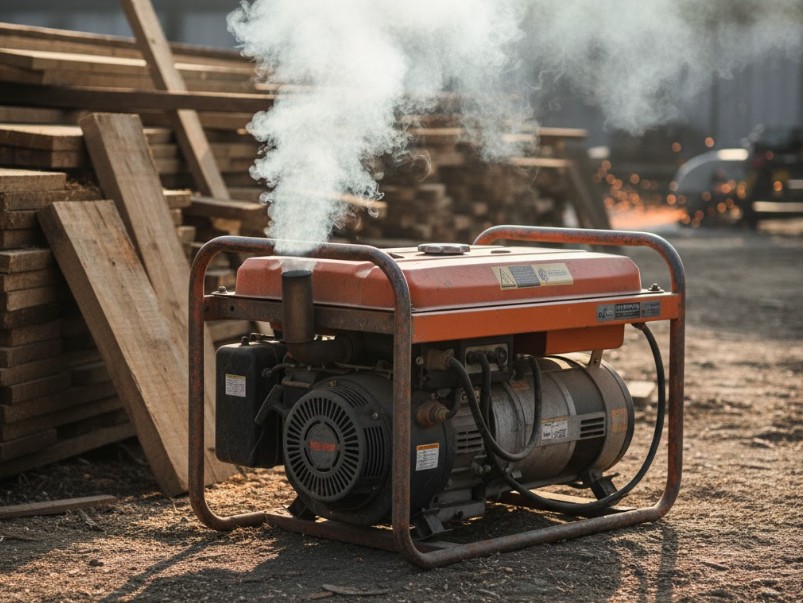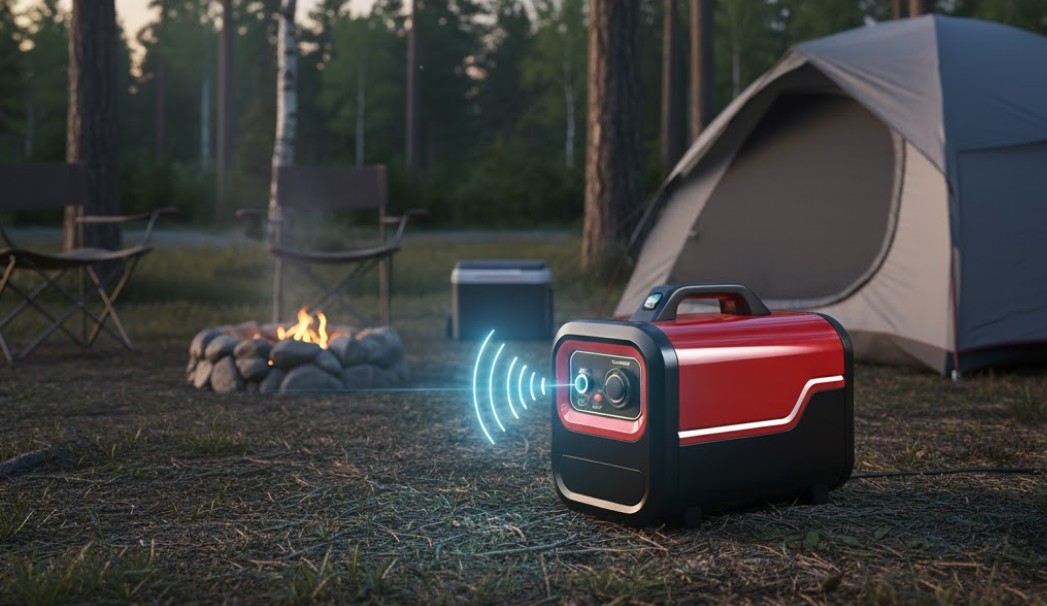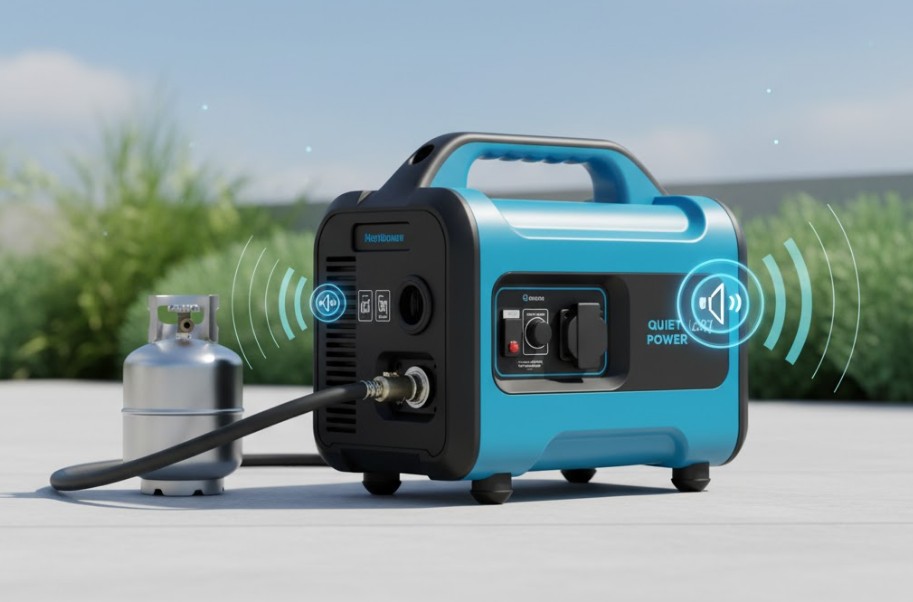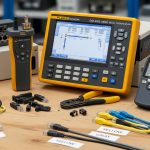In a world increasingly reliant on electricity, a reliable backup power source is no longer a luxury—it’s a necessity. From running essential appliances during a power outage to powering tools at a remote job site or keeping the lights on at a campsite, generators play a critical role. However, the market presents a fundamental dichotomy: Inverter Generators Vs Conventional Generators. For the consumer, understanding the core differences between these two technologies is essential for making an informed, cost-effective, and practical purchasing decision.
This comprehensive guide delves deep into the mechanisms, pros, cons, and real-world applications of both generator types. We will explore everything from the quality of the electricity they produce to their fuel economy, noise footprint, and ultimate versatility, ensuring you have the knowledge necessary to power your life confidently.
The Conventional Workhorse: Understanding Traditional Generators
For decades, the conventional generator, also known as a traditional or open-frame generator, has been the standard for portable backup power. These machines are built for rugged reliability and raw power, often serving construction crews and providing emergency power for large appliances.
What is a Conventional Generator?
A conventional generator operates using a simple, time-tested principle. An internal combustion engine—typically gasoline or propane powered—drives an alternator (generator head). This mechanical connection creates an electrical current. The engine’s speed dictates the frequency of the AC current produced, which must be maintained at a constant 3,600 revolutions per minute (RPM) to generate the North American standard 60-hertz (Hz) frequency. This constant, high-speed operation is the defining feature, and, as we shall see, the primary limitation, of this generator type.
How Conventional Generators Work: Fixed Power Output
The operational mechanics of a conventional generator are straightforward but inflexible. The engine must run at full throttle, regardless of the actual load connected to it. If you plug in a single lamp or an entire refrigerator, the engine maintains that fixed 3,600 RPM. This is done to ensure the stability of the 60 Hz frequency, which is crucial for most household and commercial electronics to function correctly. Consequently, if the load is low, the engine is still consuming a significant amount of fuel and producing its maximum noise output.
Furthermore, the power produced by a conventional generator is raw Alternating Current (AC). While sufficient for heavy-duty tools, floodlights, or simple resistance loads (like heating elements), this raw power can contain a higher level of Total Harmonic Distortion (THD). This distortion is a measure of the purity of the electrical sine wave. High THD can be problematic for sensitive electronics, a factor that becomes increasingly important in the modern, digital household. To learn more about the basics of generator power and safety, you might find this resource helpful: Home Generator 101: How to Power On When the Power Goes Out.

Pros and Cons of Conventional Generators
Understanding where traditional generators excel—and where they fall short—is key to the Inverter Generators Vs Conventional Generators debate.
The Advantages:
- Raw Power Output: They are typically available in much higher wattage capacities than most portable inverters, making them suitable for powering well pumps, large HVAC units, or even serving as an economical option for whole house generator backup solutions (though typically less efficient than dedicated whole-house systems).
- Durability and Simplicity: Their open-frame design makes them easy to maintain and inherently durable. They are designed to withstand harsh outdoor conditions.
- Lower Initial Cost: Watt-for-watt, a conventional generator often has a significantly lower initial purchase price than an inverter model.
The Disadvantages:
- Noise: They are loud. Their fixed, high-speed RPM operation generates substantial noise, often exceeding 75 dB, which can violate campground rules or disturb neighbors during an outage.
- Fuel Inefficiency: Due to the constant 3,600 RPM, they burn the same amount of fuel whether they are powering a full load or just a trickle, leading to poor fuel economy and shorter run times at low loads.
- Power Quality: The power is less “clean.” The high THD can pose a risk to microprocessors, smart TVs, computers, and sophisticated medical equipment.
- Weight and Bulk: Their heavy components and open-frame design make them less portable and significantly heavier than comparable inverter models.
The Modern Marvel: Decoding Inverter Generator Technology
The inverter generator represents a significant leap forward in generator technology, addressing many of the limitations inherent in their conventional counterparts. Developed initially for small-scale recreational use, this technology has quickly expanded into the home backup and job site markets.
What is an Inverter Generator?
An inverter generator still uses an internal combustion engine to produce AC power, but the critical difference lies in what happens next. Instead of the engine’s speed directly dictating the AC frequency, the initial raw power is passed through a sophisticated electronic process—the inverter—which cleans up the power and allows the engine speed to fluctuate based on the required load. This capability to adjust engine speed is the core distinction in the Inverter Generators Vs Conventional Generators contest.
The Three-Phase Power Conversion Process
The magic of the inverter generator lies in its three-step power conversion process, which is why it’s also sometimes referred to as a “digital generator.”
- Phase 1: AC to DC. The engine generates high-frequency raw AC power, but this AC is immediately converted into direct current (DC). This allows the engine to run at a variable speed.
- Phase 2: Power Conditioning (The Inverter). The DC power is stored in capacitors and electronically regulated. This is the crucial step where the “dirty” power is cleaned up, removing distortions.
- Phase 3: DC to AC. The clean DC power is then converted back into stable, reliable 60 Hz Alternating Current (AC) using a computer-controlled microprocessor.
The final output is a nearly perfect sine wave, often achieving a THD of less than 3%, making it safer than wall power in some cases. This superior power quality makes them ideal for running sophisticated devices, as detailed in guides for best portable inverter generators.
The Role of Economy Mode and Clean Power
A key feature of the inverter system is the ‘Economy Mode’ or ‘Smart Throttle.’ This system uses internal sensors to monitor the demand on the generator. If only a small load is connected (e.g., a phone charger), the engine slows down significantly, saving fuel and dramatically reducing noise. When a larger load (e.g., a microwave) is plugged in, the system instantly ramps up the engine speed to meet the new demand. This variable speed is impossible for a conventional generator because the engine speed is the frequency.
The ability to provide clean, stable power is the primary reason many choose inverters, especially for sensitive electronics in the home. If you’re looking for a backup solution that won’t fry your digital gear, focusing on inverters, particularly those rated for home backup, is highly recommended.

Pros and Cons of Inverter Generators
The Advantages:
- Silence is Golden: They are significantly quieter, often operating in the 50-60 dB range, comparable to a normal conversation. This is crucial for environments like RV parks and residential areas, making them the preferred choice for RV use.
- Exceptional Fuel Efficiency: The variable engine speed allows them to optimize fuel consumption based on demand, leading to longer run times from smaller fuel tanks.
- Clean Power: Low THD (under 3%) makes them safe for all modern electronics, from laptops to delicate medical devices.
- High Portability: Their enclosed design and use of lighter components make them compact and relatively easy to carry.
- Parallel Capability: Most inverters can be linked (paralleled) with an identical unit to double the power output without needing to buy a single, much larger, heavier unit.
The Disadvantages:
- Higher Initial Cost: The sophisticated electronic components (the inverter board) increase the manufacturing cost, resulting in a higher price tag.
- Lower Maximum Wattage: While parallel kits help, the single-unit output is typically capped below that of the largest conventional generators.
- Complex Repairs: If the inverter board fails, it’s an expensive component to replace, and troubleshooting the complex electronics is more difficult than working on the simpler mechanics of a conventional generator.
Direct Head-to-Head Comparison: Inverter Generators Vs Conventional Generators
To truly settle the debate on Inverter Generators Vs Conventional Generators, we must place their most important characteristics side-by-side. The differences are not trivial; they define the suitability of each machine for specific applications.
Clean Power and Total Harmonic Distortion (THD)
The quality of electricity is arguably the most critical difference. As mentioned, conventional generators can have a THD ranging from 10% to over 25%. This “dirty” power is tolerable for universal-motor tools (saws, drills) and incandescent lighting, which are largely insensitive to waveform distortion. However, modern devices—any appliance with a microprocessor, like a furnace controller, or a variable-speed appliance—require a near-perfect sine wave. A sudden power spike or a distorted waveform can damage or permanently destroy these sensitive components.
Inverter generators, by contrast, smooth out the power wave, producing a THD of 1.5% to 3%. This is often cleaner and more consistent than the power supplied by some utility companies. If the primary use is to keep your home’s digital life running—smart refrigerators, Wi-Fi routers, televisions, and charging stations—the inverter is the clear winner for safety and longevity of your electronics. This focus on clean power is fundamental when considering any form of backup power for your home.
Noise Levels and Decibel Ratings
Noise is a major point of divergence. The constant 3,600 RPM of a conventional generator creates a continuous, loud roar, similar to a lawnmower running constantly. Their noise levels typically start around 68 dB to 78 dB. The difference between 60 dB and 70 dB might not seem like much, but the decibel scale is logarithmic; a 10 dB increase represents a doubling of perceived loudness.
Inverter generators, benefiting from the sound-dampening enclosed casing and the variable-speed engine, are dramatically quieter. They often operate at 50 dB to 60 dB at quarter load. This is the difference between a loud conversation and background office noise. When camping or in an RV park, the lower noise level of an inverter is not just a preference; it’s often a requirement, as many campgrounds enforce strict noise limits. The quiet operation is why inverters are universally recommended for RV use and remote campsites.
Example Comparison:
- Conventional Generator (3500W): ~75 dB (Lawn Mower)
- Inverter Generator (3500W): ~58 dB (Dishwasher or Normal Conversation)
Fuel Efficiency and Run Time
The ‘Economy Mode’ feature of the inverter generator translates directly into superior fuel efficiency. Because the engine speed throttles down to match the required load, it only uses the fuel necessary to produce the power demanded. A 2,000-watt inverter running at a 25% load can often run for over 10 hours on a single gallon of gasoline.
A conventional generator, conversely, runs at maximum speed all the time. Running a small load on a 3,500-watt conventional unit means the engine is still revving at 3,600 RPM and burning fuel as if it were running near capacity. This waste of fuel increases operating costs and requires more frequent refueling, which can be a significant inconvenience during a long power outage.
Portability, Size, and Weight
Inverter generators are engineered for portability. Their compact, enclosed design integrates the muffler and other components neatly, resulting in a smaller footprint. More importantly, the use of advanced internal magnets and electronics in the alternator reduces the weight substantially. A 4,000-watt inverter can weigh around 85 pounds, whereas a 4,000-watt conventional model can easily weigh 120 pounds or more. The weight differential makes the inverter generator the only practical choice for applications requiring frequent moving, such as tailgating or construction where the unit must be transported daily.
The open-frame, bulky design of the conventional generator, while contributing to durability, makes it cumbersome to lift, store, and transport, typically requiring a set of wheels and handles, even on smaller units.
Cost and Longevity
The initial purchase price of a conventional generator is a strong selling point for budget-conscious buyers. However, this is where a total cost of ownership (TCO) calculation becomes necessary. The lower initial cost is often offset over time by the conventional unit’s much higher fuel consumption.
While the inverter unit has a higher upfront cost, its superior fuel efficiency and reduced wear-and-tear (due to variable speed operation) can make it cheaper to operate in the long run. Furthermore, the electronic complexity of the inverter board means that if a major component fails, the repair cost can be steep. Conversely, the mechanical simplicity of a conventional generator means engine parts are generally cheaper and easier to source and replace, making their mechanical longevity potentially higher, provided they are well-maintained.
Power Output, Scalability, and Fuel Versatility
Historically, conventional generators held the advantage in maximum wattage, with units easily exceeding 10,000 watts. While inverters are catching up, larger industrial needs still often necessitate a conventional unit.
However, inverter generators introduce parallel capability. Two smaller 3,000-watt inverters, for instance, can be linked together using a parallel kit to provide 6,000 watts of synchronized, clean power. This offers flexibility: you can use one small unit for light use (e.g., camping) and link them for heavy use (e.g., home backup). This flexibility is rarely available with conventional units.
Furthermore, the modern inverter market has embraced dual-fuel inverter generators and even tri-fuel inverter generators, offering the consumer the choice between gasoline, propane, and in some cases, natural gas. This fuel diversity adds a layer of convenience and strategic storage capability that can be crucial during extended outages.
Maintenance and Durability
Maintenance is a point where simplicity often wins. A conventional generator’s open frame allows for easy access to the engine, spark plugs, and air filters. Routine maintenance is typically straightforward: check the oil, change the plug, and keep it clean. However, the constant high-speed operation can lead to faster wear on engine parts.
The enclosed shell of the inverter generator makes accessing internal components slightly more cumbersome, but the variable speed operation means the engine operates under less stress and for fewer hours at full capacity. This often translates to less frequent engine maintenance. However, the electronics must be protected from extreme moisture and heat, as damage to the inverter board is difficult and costly to remedy.
Choosing the Right Tool for the Job: Application-Based Decisions
Ultimately, the choice between Inverter Generators Vs Conventional Generators boils down to your primary use case. Neither is inherently superior; they are designed for different roles.
When to Choose a Conventional Generator
You should lean toward a conventional generator if your priority is raw, high-amperage power for tools that are not sensitive to power quality and if noise and fuel efficiency are secondary concerns. This includes:
- Construction Sites: Running air compressors, concrete mixers, arc welders, or heavy-duty power tools. The open-frame design is also more suited to the inevitable rough handling of a job site.
- Heavy Emergency Backup: If your priority is to start a well pump or a central air conditioning unit quickly and cost-effectively, and you don’t mind the noise, a large, powerful conventional unit can do the job with a lower initial investment.
- Simplicity: If you prefer simple, mechanical maintenance that can be handled by any small engine mechanic.
When to Choose an Inverter Generator
The inverter generator is the undisputed champion of the modern, quiet, and digital world. You should choose an inverter if your priority is quiet operation, fuel efficiency, and protecting sensitive electronics. This includes:
- Recreational Use: Camping, tailgating, or powering an RV where noise restrictions and neighbors are a concern. Their light weight is perfect for loading and unloading from vehicles.
- Sensitive Home Backup: Powering your essential modern appliances: computers, flat-screen TVs, smartphones, Wi-Fi, CPAP machines, and high-efficiency furnace controls.
- Urban/Suburban Emergency Use: Operating in a dense neighborhood where a loud generator would be a significant nuisance or in violation of local noise ordinances.
- Portability Needs: Applications requiring the unit to be frequently moved, like mobile vending, light job sites, or remote photography shoots.
Advanced Features and Trends in Generator Technology
The market for both Inverter Generators Vs Conventional Generators is constantly evolving, with new features enhancing their utility and convenience.
Parallel Capability: The Inverter’s Advantage
As noted, the ability to link two smaller inverters to double the output is a game-changer. This means a homeowner can invest in a powerful yet light inverter generator setup, giving them redundancy. If one unit fails, the other can still operate for essential tasks—a level of reliability not easily achieved with a single, large conventional unit. This setup also provides a scalable solution: use one unit for light duty and both for heavy duty, maximizing fuel efficiency across all loads.
Smart Technology and Remote Monitoring
Modern generators, particularly inverters, are increasingly integrated with smart technology. Many units now feature Bluetooth or Wi-Fi connectivity, allowing owners to monitor fuel levels, oil life, total run time, and even remotely start or stop the generator from a smartphone app. This is a massive convenience for users who might need to start their generator from inside a safe location during severe weather or a late-night outage. While some high-end conventional models are adopting similar technology, it is far more prevalent in the digital ecosystem of the inverter market.
Fuel Type Flexibility: Beyond Gasoline
While gasoline remains the most common fuel, the demand for dual and tri-fuel options reflects a desire for greater operational flexibility and safety. Propane (LPG) offers an excellent alternative, as it stores indefinitely without degrading (unlike gasoline), burns cleaner, and is often easier to store in large quantities for extended outages. Diesel, while less common in portable consumer units, remains a staple for the highest-wattage conventional and commercial generators due to its density and efficiency.

Final Thoughts on the Inverter Generators Vs Conventional Generators Debate
The comparison between Inverter Generators Vs Conventional Generators is not about finding a winner, but about aligning technology with need. For the vast majority of consumers today—the camper, the RVer, the homeowner with sensitive electronics, and the suburban resident needing quiet backup power—the inverter generator is the superior choice. Its clean power, quiet operation, and exceptional fuel efficiency provide a modern solution for modern power needs. The higher initial investment is easily justified by the lower operating costs and the security of knowing your digital appliances are protected.
Conversely, the conventional generator remains the powerful, no-frills, and cost-effective choice for industrial applications or users whose power demands exceed the practical limits of a portable inverter setup, and who prioritize initial cost over long-term operating expenses and noise reduction. Its role as a reliable, rugged power source on job sites is secure.
Before purchasing, we highly recommend you carefully calculate the wattage required for your specific needs, consider your budget for both the purchase and the long-term fuel consumption, and determine whether you need the safety of a clean sine wave or the raw power of a fixed-speed engine. By answering these questions, you can move past the debate and secure the ideal power solution for your future.



![5 Best Radiator Case Fans for Liquid Cooling 2025 [140mm] 9 Best Radiator Case Fans for Liquid Cooling 2019 [140mm]](https://bestreviews.vip/wp-content/uploads/2019/06/Best-Radiator-Case-Fans-for-Liquid-Cooling-2019-140mm-150x150.jpg)




